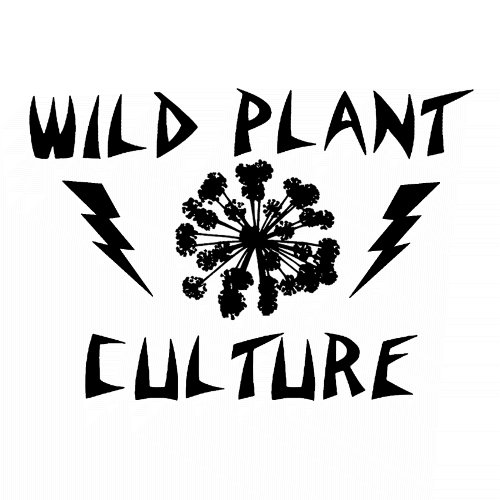Do You Know Where Your Medicine Comes From?

Today I went hiking with a friend who knew of a stand of blue cohosh, not that far from where I live. At first, he couldn't find it, and we ambled up the trail in the dormant late-autumn woods, I without much hope of finding a colony of blue-fruited medicinal herbs.
As we exited an old woods, full of oak foliage and understory shrubs, and walked towards a forest of young ash trees and maples, I decided we must have missed it. "Can't be this way", I commented dourly, looking at the dense growth of Japanese barberry ahead.
"Oh, here it is...", he said, just a few feet later. And, there, improbably to my eye, were blue cohosh's tan stems and drying blue fruit in a nice-sized stand, hundreds of stems worth, cropping up from the rocky argillite tumble, interspersed with wild ginger and Virginia waterleaf.
Looking around, I noticed that there were a good deal of hackberry trees, an unusually dense grove for our area; sugar maple saplings, a stray linden... Not a post-agricultural regrowth forest as I had assumed, but probably a small clearcut that had retained its old forest herbs and recruited some rich-soil trees as it regenerated.
* * *
Everyone knows a story of someone "not knowing where there food comes from" -- the urban kids who only know food from supermarkets, who are astonished at their first site of ripe tomatoes growing on a vine... or the woman who came into the farm stand Rachel and I used to work at, and was bewildered by the potted lettuce plants. "Wait, lettuce grows from a seed?" she asked...
It's not particularly in the interest of the mega-food conglomerates to make people aware that food comes not from them but from sun and soil and healthy ecology... or that one can grow one's own food, in most places, by hook or by crook.
Ditto the large pharmaceutical corporations, whose products, processed and packaged, bear even less resemblance to their botanical precursors than supermarket food does to garden-fresh fruit.
Yet the pharmaceutical industry is deeply dependent on plant materials, for bio-prospecting new pharmacologically active molecules, and for synthesis of pharmaceuticals derived from plant chemicals.
Somewhere around 50% of our "pharmaceuticals" are really repackaged plant chemicals, extracted, isolated, sometimes manipulated. Yet how people whose lives have been saved or benefited by these medicines are aware of the plants they originated from?
Take Pacific yew, the source of the anti-cancer agent Taxol. A denizen of Pacific old-growth forests, it was nearly extirpated in the wild as a "trash tree" after extensive clear-cutting of the region's ancient forest stands. Then trials of its chemical constituents turned up its anti-cancer activity, and suddenly there was not enough of this incredibly slow-growing yew tree to synthesize paclitaxel from. The tragedy and irony of this situation aside, how many people with lung cancer who have utilized Taxol realize that a "trash tree" from the Pacific Northwest saved their lives?
* * *
Blue cohosh is a totemic plant for me. It signifies both the old forest and the unpredictable lifeways of wide-ranged but never common plant species. It has a color palette all of its own that bespeaks unusual chemical constituents and evokes the ecology of the rocky hillside, deep shade, and pure seeps.
It is one of our native eastern-forest medicinal herbs from a guild also including ginseng, bloodroot, goldenseal, and others, revered by many globally and also heavily impacted by global trade and intensive use. I'm always staggered by the tonnage of these plants that are wild-harvested, including such statistics as "250 tons of [Hepatica foliage]... consumed in 1883 alone"[i] and the over 150 tons of black cohosh root harvested in 2004-2005... the vast majority (as much as 98%) of which comes from remnant wild stands.
Blue cohosh is one of the plants that is "in development" here at Wild Ridge. We've collected seed from three large stands in the state, hoping to build up a genetically diverse crop. It generally takes a few years to germinate, and a year or two to mature, so it will be quite a while before we have our first crop for sale. But when we do, it will be a moment of quiet joy for me, as it signifies exactly the kind of plant that we began this nursery to be able to help, create more of, and re-disperse through the degraded and fragmented landscapes of our region.
* * *
Just as we can grow our own food, we can grow our own medicine too. My wife and I extensively use herbs, native and non-, for the difficulties, illnesses, and stresses of everyday life. We know the traditional and contemporary uses of our medicines, and simple techniques for extracting and storing the medicinal activity of roots, flowers, and leaves. It may sound old-fashioned, improbable, or far-fetched to some people who don't "believe" in herbal medicine. Ultimately, it's not that much different from growing tomatoes and pressing sauce as opposed to going to the supermarket and purchasing a bottle of Ragu.
Sumner, J. The Natural History of Medicinal Plants. Timber Press, Portland 2000
